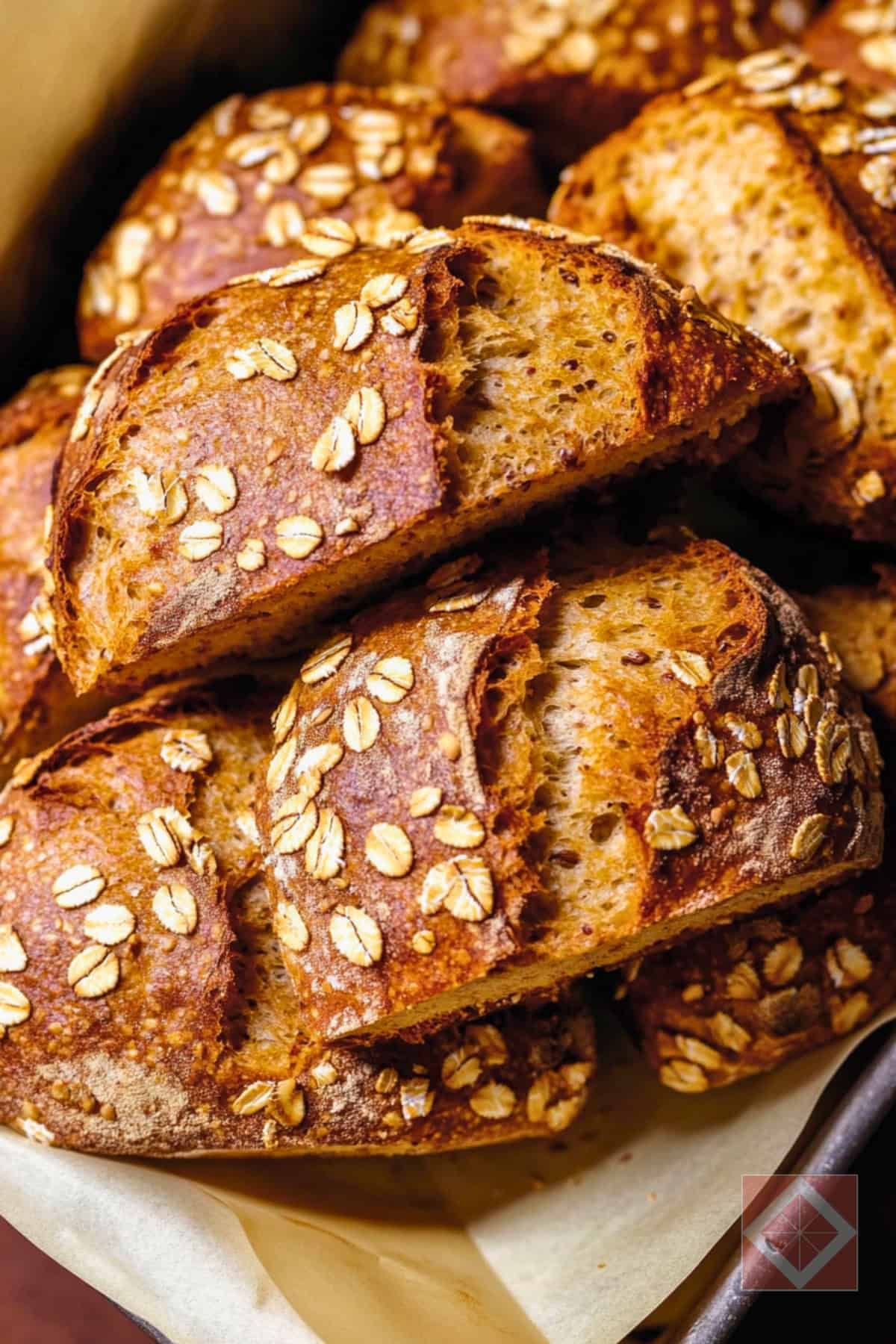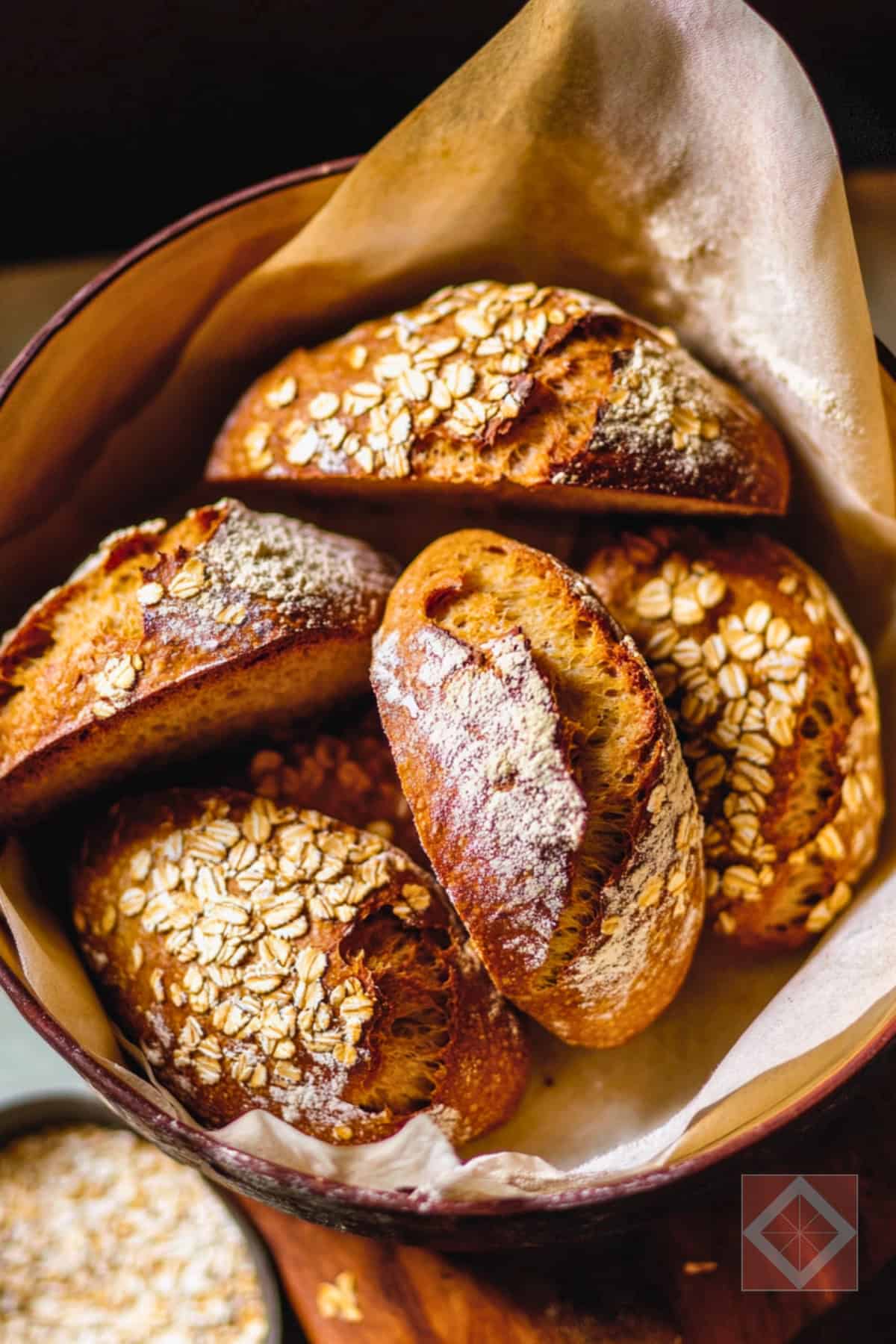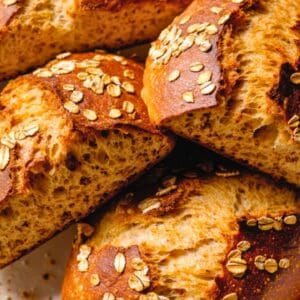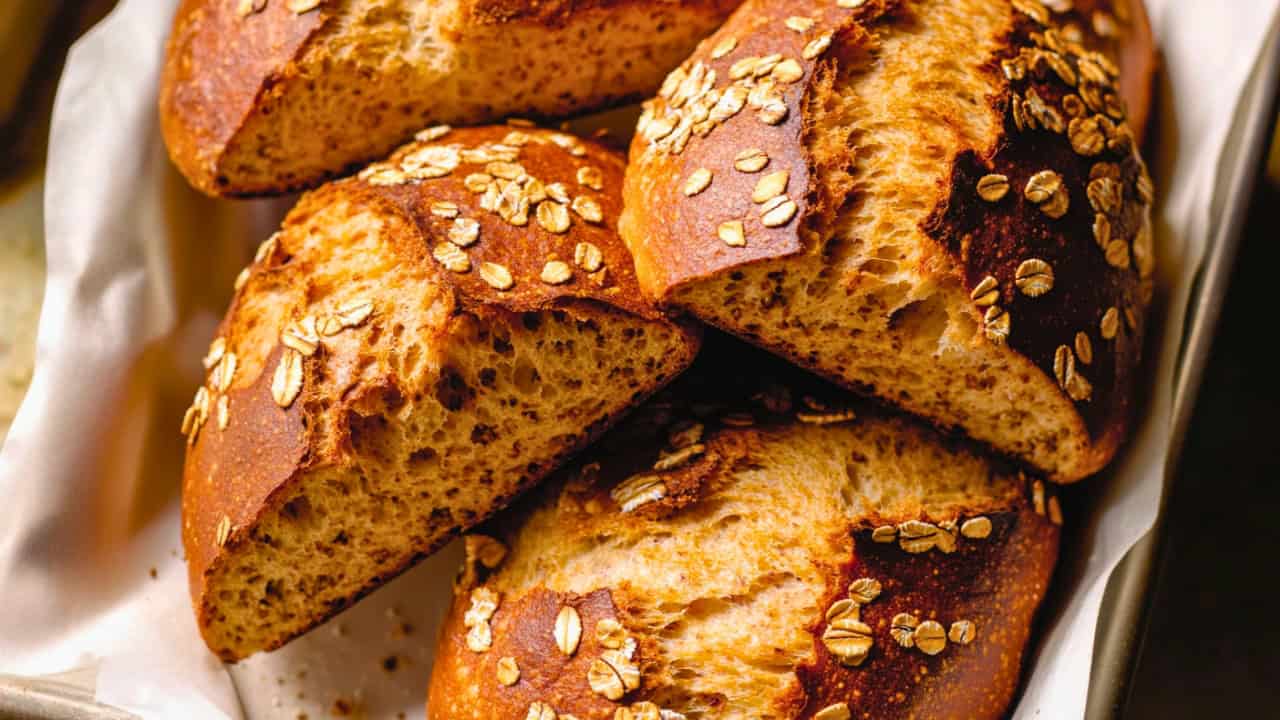These aren’t just any rolls. With a deeply satisfying crust and a nutty, seeded bite, multigrain bâtons stand out as the ultimate bread for those looking to add variety and character to their baking repertoire.
This recipe brings rustic charm and artisan texture to the table, offering a flavorful alternative to the standard white roll. From sandwich-ready slices to soup companions, these seeded rolls check every box for a perfect everyday staple with a gourmet twist.
Why Multigrain Bâtons Are a Must-Try

What makes this bread unique is the multilayered flavor and texture that emerges from a mix of all-purpose flour, whole rye flour, and flaxseeds. The method yields a crisp exterior with a soft, airy interior—ideal for any meal that calls for a chewy, flavorful sidekick.
A scattering of rolled oats or seeds on the crust adds a visual and tactile appeal that elevates these rolls far beyond basic bakery fare.
Not only do these bâtons bring visual intrigue to a bread basket, they’re also functional: perfect for sandwiches, hearty enough to serve alongside a stew, and indulgent enough to pair with salted butter and jam.
The sourdough preferment adds depth and a touch of tang while the honey rounds everything out with subtle sweetness. It’s a recipe that balances tradition with creativity—baking at its most satisfying.
A Two-Day Process That’s Worth Every Step
This is a bread recipe that rewards patience. The process spans roughly 19 hours from start to finish, including overnight fermentation.
The journey begins with a simple preferment—just sourdough culture, flour, and cold water—that rests overnight to build structure and complexity.
On the second day, the rest of the ingredients are gradually worked in by hand, resulting in a pancake-like batter that transitions into a supple dough. Gentle folding, rather than aggressive kneading, helps develop gluten while maintaining the rustic texture these rolls are known for.
The process uses a series of “bowl folds,” making it approachable even for novice bakers.
Each step—from dividing the dough into equal portions to shaping and coating them in a seed crust—builds toward a final bake that’s both beautiful and flavorful.
And while it may sound complex, the steps are clearly laid out, with enough flexibility to suit different kitchen setups.
Texture, Technique & That Signature Seed Crust
A defining feature of this recipe is the seed crust, which is rolled onto damp dough just before the final rise. It gives the rolls not only their signature appearance but also a delightful crunch that contrasts beautifully with the tender crumb.
The method calls for oats, sunflower seeds, flax, or a combination—allowing for personalization based on what’s in the pantry.
Scoring the rolls before baking adds a professional touch while helping control the expansion in the oven. Steam plays a crucial role during baking, enhancing the crust’s crackle and shine.
This step mimics a professional bread oven and makes a big impact in a home kitchen.
How to Serve & Store These Rolls
Once baked to a golden hue, these rolls are best enjoyed warm from the oven, though they hold up wonderfully at room temperature. The crust remains firm for a short time after baking but softens as the rolls cool—perfect for storing or using later.
For meal prep or batch baking, the rolls can be frozen and later reheated without losing quality. Simply thaw and reheat in a 350°F oven to restore the crisp outer layer and soft interior.
This makes them an ideal addition to weeknight dinners or brunch spreads without requiring fresh baking each time.
Perfect for Everyday Use or Special Occasions

While the process leans artisan, the result is entirely versatile. These rolls can hold their own at a holiday table, yet they’re just as fitting for a packed lunch or midday snack.
For anyone seeking out reliable bread recipes with character and depth, this multigrain bâtard-style roll deserves a permanent place in rotation.
With thoughtful technique and rich flavor packed into every bite, this recipe transforms simple ingredients into something extraordinary—proof that the best bread doesn’t have to be complicated, just well-crafted.

Multigrain Bread Bâtard Recipe
Equipment
- Rimmed baking sheet
- Parchment paper
- Clean kitchen towel
- Plastic bowl scraper
- Bench knife or sharp blade
- Bowl for mixing
- Baking stone or steel (optional)
- Cast-iron skillet or lava rock-filled pan (for steaming)
- Baker’s lame or sharp knife (for scoring)
Ingredients
Preferment:
- 1½ tablespoons sourdough culture
- ½ cup plus 3 tablespoons unbleached all-purpose flour
- ¼ cup plus 2 tablespoons cold water 55°F to 60°F
Dough:
- ¾ cup plus 3 tablespoons warm water
- 2 cups plus 2 tablespoons unbleached all-purpose flour plus more for dusting
- ¾ cup plus 1 tablespoon whole rye flour
- 1¾ teaspoons fine salt
- 1 teaspoon instant yeast
- 1½ teaspoons honey
- ¼ cup flaxseeds
Seed Crust:
- 1 cup rolled oats, rye chops, or a mix of unroasted flaxseeds, sunflower seeds, or similar
Instructions
Day 1 – Prepare the Preferment:
- Combine sourdough culture, flour, and cold water in a bowl and stir until the mixture is evenly moistened and free of dry flour.
- Cover and leave at room temperature overnight for 12 to 16 hours.
Day 2 – Make the Dough:
- Stir the warm water into the preferment to loosen it, then use your fingers to fully break it apart.
- Mix in the all-purpose flour, rye flour, salt, yeast, honey, and flaxseeds until you achieve a consistent dough without dry patches.
Bulk Fermentation:
- Perform 6 to 8 sets of folds over the course of 1 hour using damp hands. Turn the dough after each fold and keep it covered. It should look puffy, though not necessarily double in size.
Divide and Preshape:
- Lightly flour your surface and use a bowl scraper to gently transfer the dough out.
- Deflate and divide into 8 equal pieces, each about 100 grams.
- Gently preshape each portion into a round, cover with a towel, and rest for 10 minutes.
Shape the Dough, Add Crust, and Final Rise:
- Lay the seed mixture on parchment-lined baking sheets.
- Wet a towel, wring it out, and lay it flat. Roll each dough ball over the damp towel, then over the seeds to coat all sides.
- Shape each roll into a 6-inch bâtard with slightly tapered ends and place seam-side down onto the parchment.
- Cover and allow the rolls to rise for 45 minutes to 1 hour until visibly puffed.
Score and Bake:
- Preheat your oven to 450°F with a baking stone or steel and place a cast-iron skillet on the lower rack.
- Score each roll lengthwise with a lame or sharp knife.
- Slide the rolls (on the parchment) into the oven and pour 1 cup of warm water into the hot skillet to create steam.
- Bake for 25 to 30 minutes until the crust is golden and firm.
- Cool on a wire rack.
Notes
- The crust will soften slightly as the rolls cool.
- Rolls can be stored at room temperature for up to 3 days or frozen.
- To reheat, bake thawed rolls at 350°F for 5 to 8 minutes until warm and crisp.
Davin is a jack-of-all-trades but has professional training and experience in various home and garden subjects. He leans on other experts when needed and edits and fact-checks all articles.

